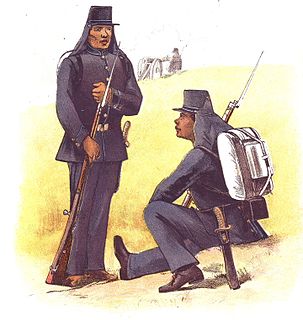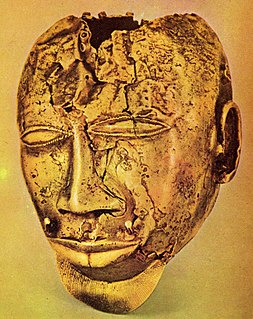Osei Kofi Tutu I was one of the founders of the Ashanti Empire, aided by Okomfo Anokye, his chief priest. The Asante are a powerful, warlike, and highly disciplined people of West Africa. Osei Tutu led an alliance of Asante states against the regional hegemon, the Denkyira, completely defeating them. Then, through force of arms and diplomacy, he induced the rulers of the other Asante city-states to declare allegiance to Kumasi, his capital. Throughout his career he was politically advised by Anokye, a cleric whose spiritual authority over the people aided in his founding of the empire.

Osei Tutu II is the 16th Asantehene, traditional ruler of the Kingdom of Ashanti in Ghana since 26 April 1999. By name, Otumfuo Osei Tutu II is in direct succession to the founder of the Empire of Ashanti, Otumfuo Osei Tutu I.

The Golden Stool is the royal and divine throne of the Ashanti people and the ultimate symbol of power in Asante. According to legend, Okomfo Anokye, High Priest and one of the two chief founders of the Asante Confederacy, caused the stool to descend from the sky and land on the lap of the first Asante king, Osei Tutu. Such seats were traditionally symbolic of a chieftain's leadership, but the Golden Stool is believed to house the spirit of the Asante nation—living, dead and yet to be born.

The Akyem are an Akan people. The term Akyem is used to describe a group of three states: Akyem Abuakwa, Akyem Kotoku and Akyem Bosome. These nations are located primarily in the eastern region. The term is also used to describe the general area where the Akyem ethnic group clusters. The Akyem ethnic group make up between 3-9 percent of Ghana's population depending on how one defines the group and are very prominent in all aspects of Ghanaian life. The Akyem are a matrilineal people. The history of this ethnic group is that of brave warriors who managed to create a thriving often influential and relatively independent state within modern-day Ghana. When one talks of Ghanaian history, there is often mention of The Big Six). These were six individuals who played a big role in the independence of Ghana. Of the big six, people of Akyem descent made up the majority.
Akwamu was a state set up by Akan people that flourished in the 17th and 18th centuries. The name was also applied to its people. Originally emigrating from Bono state, the Akan founders settled in Twifo-Heman. The Akwamu led an expansionist empire in the 17th and 18th centuries. At the peak of their empire, the Akan created an influential culture that has contributed to at least three countries in West Africa.

The AshantiEmpire was an Akan empire and kingdom in what is now modern-day Ghana from 1670 to 1957. The Ashanti Empire expanded from Ashanti to include the Brong-Ahafo Region, Central Region, Eastern Region, Greater Accra Region and Western Region of present-day Ghana. Due to the empire's military prowess, wealth, architecture, sophisticated hierarchy and culture, the Ashanti Kingdom has been extensively studied and has more historiographies by European, primarily British, authors than any other indigenous culture of Sub-Saharan Africa.
Mensa Bonsu was the tenth king of the Kingdom of Ashanti, from 1874 until his forced abdication on 8 March 1883.

Prempeh I was the thirteenth king ruler of the Asante state of the Kingdom of Ashanti and the Asante Oyoko Abohyen Dynasty. King Asantehene Prempeh I ruled from March 26, 1888 until his death in 1931, and fought an Ashanti war against Britain in 1893.

Otumfuo Opoku Ware II was the 15th Emperor-King of the Ashanti people and Ashanti and Ashantiland and Ashanti Empire.

Kwasi Boakye, sometimes archaically spelt as Aquasi Boachi, was a mining engineer who was born a Prince of the Ashanti Empire. Together with his cousin Kwame Poku he was sent in 1837 by King Kwaku Dua I to the Netherlands to receive education, as part of larger negotiations between Ashanti about the recruitment of Ashanti soldiers for the Dutch East Indies Army.

The Manhyia Palace is the seat of the Asantehene of Asanteman, as well as his official residence. It is located at Kumasi, the capital of the Ashanti Kingdom and Ashanti Region. The first palace is now a museum. King Opoku Ware II built the new palace, which is close to the old one and is used by the current Asantehene, King Osei Tutu II.

Prempeh II, was the 14th Asantehene, or king of the Ashanti, reigning from 22 June 1931 to 27 May 1970.
Fredua is both a surname and given name. Notable people with the name include:
Jan Verveer was a major general of the Royal Netherlands Army.
Kwaku, alternatively Kweku, is an Ashanti given name to Ashanti male children born on Wednesday from the Ashanti people ethnic group.














